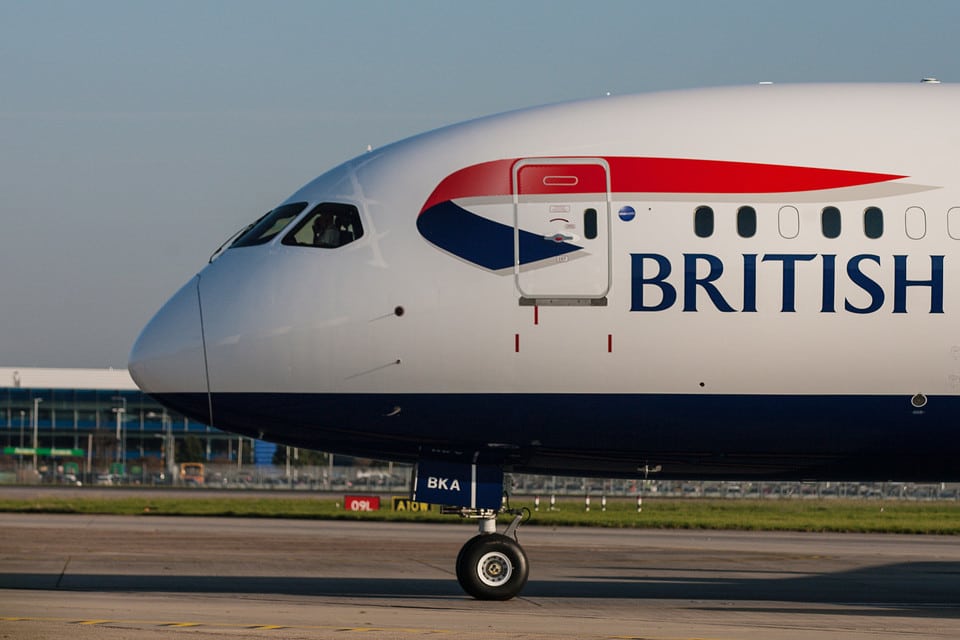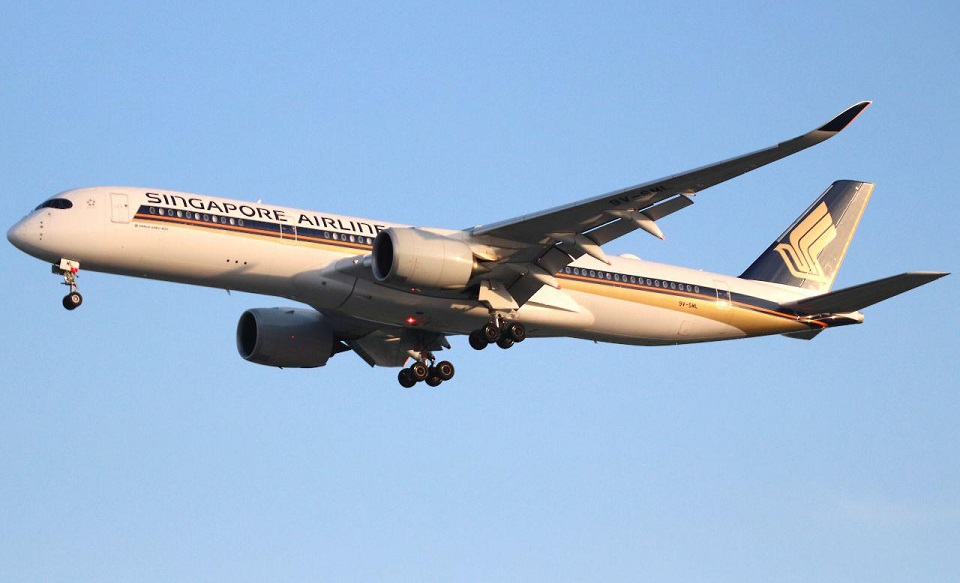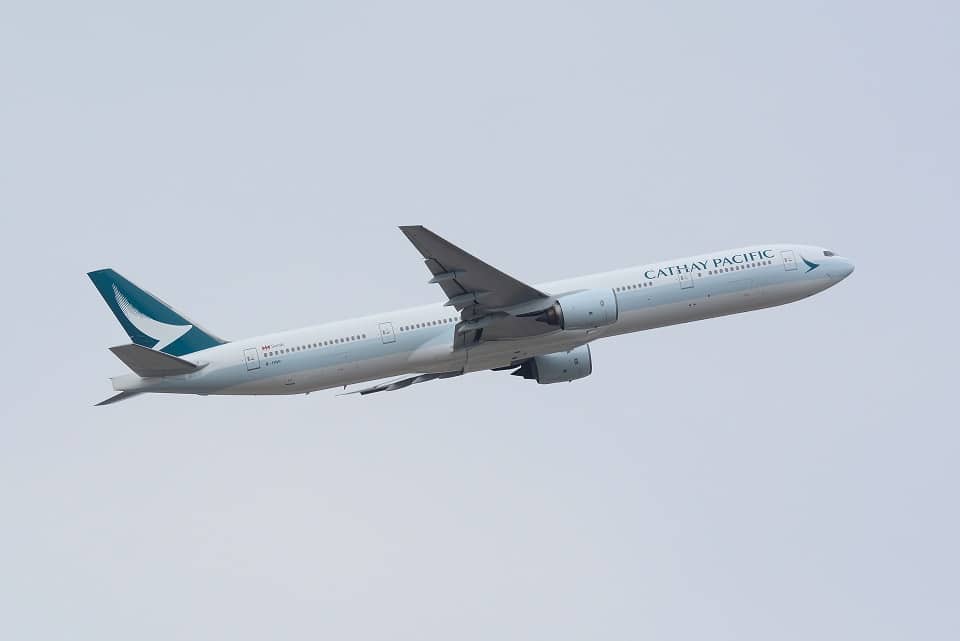Airlines
I’m A British Airways Captain, And These Facts Will Help Cure Your Fear Of Flying

You’ve already had to pass up a lot of wonderful vacation opportunities because you were scared to board a plane. You’ve been visualizing all kinds of disasters leading up to your vacation. Before you board, there are a number of requirements that must be satisfied. Once you’re above the clouds, are you constantly keeping a close eye on everything?
British Airways has developed new form courses to help people who are afraid of flying overcome their fears and to answer any technical questions they may have. The Sun has written stories about everything; you can read a handful of them here.
Now let us introduce you to Steve Allright, British Airlines Captain, who will be your most effective partner in this all-too-common dispute.
The pilot, who is appropriately given a nickname, oversees BA’s Flying with Confidence course for nervous passengers. In this article, he shares some interesting facts about airplanes that will help you relax on your next flight, such as how far you can glide a plane and why turbulence is nothing to be worried about.
1. How worried about turbulence should people be?
The British Airways Flying with Confidence course’s most crucial phrase is “turbulence is uncomfortable but never hazardous.” Captain Steve of British Airlines oversees the Flying with Confidence training for anxious travelers.
“All current commercial aircraft are extremely robust and can survive any amount of turbulence. Since the beginning of aviation, designers have been knowing what is needed, and many safety aspects are higher than in any other mode of transportation.
Further, and most importantly, new aircraft are put through rigorous testing before they are approved to transport people. In our course, “Flying with Confidence,” we demonstrate a Boeing 787 on a test platform with the wings being pushed far harder than they would be in even severe turbulence. This is also quite comforting to our clients, who agree with the aforementioned statement.
2. How far can a plane drop in turbulence?
Hardly the thousands of feet you hear about or see in certain movies, for sure. Normally only 10 to 20 feet in turbulence, though this can be greater in extreme turbulence. It is critical to emphasize that their pilots have received turbulence management training and that severe turbulence is quite uncommon. In my 32 years of flying, I have only ever encountered extremely severe turbulence.
3. What is the main purpose of wearing seat belts during turbulence?
People falling amid turbulence shouldn’t cause injury. Customers are required to constantly follow the crew’s instructions and suggestions.
This sound is referred to as the “airbus barking dog.” That is essentially the sound of the aircraft’s hydraulic power system functioning, but we fully explain the course and speak with clients about any and every in-flight sound to provide further assurance. Most significantly, it’s completely natural, just as all the noise on airplanes can frighten nervous passengers.
5. Some people fear that a plane is simply ‘too heavy to take off’… any reassuring words on this?
To guarantee that the plane is properly weighed, pilots use highly advanced equipment to calculate the speed at which takeoff is safe. This is consistently confirmed, and it holds true for every element of our security procedures and checks.
6. Some get scared after takeoff because the engines seem to shut down once a certain altitude is reached
We took a lot of time in the training to discuss this because it is a hard topic. As we reduce our power after takeoff, we are essentially tricking your inner ear’s balance mechanism since the reduced drag that results from raising the landing gear means that we no longer require as much power. Absolutely normal.
7. Is there a danger that the plane will run out of fuel?
Instead of engines, wings provide aircraft flight. Even if all engines fail, a modern airplane flying at 30,000 feet can glide 100 miles.
9. Can a plane land with all the wheels break?
Yes. Although such a scenario is extremely unusual, safety is always our top priority, which is why pilots put in a lot of practice for a variety of potential emergency circumstances.
10. Any additional advice for people if they still feel nervous?
Everyone who experiences flight anxiety is welcome to enroll in the British Airways Flying with Confidence course with us. “During the course of our decades of experience with anxious fliers, we have assisted more than 50,000 people in overcoming their phobia.
“It’s also crucial to keep in mind that all of our crew members have received training in supporting apprehensive passengers, enabling them to assist clients who might be experiencing fear while traveling. Every British Airways long-haul trip has a reassuring Flying with Confidence movie available on the in-flight entertainment system.

Airlines
Singapore Airlines Ordered to Pay $3,580 to Couple over Faulty Seats

Following a dispute over defective seats during their voyage from India to Australia last year, Singapore Airlines (SIA) has been compelled to pay a sum exceeding S$3,500 to an Indian couple.
The District Consumer Disputes Redressal Commission in Hyderabad ruled in favour of Ravi and Anjali Gupta, who on May 23, 2023, had problems with their business class seats that were meant to automatically recline on their flight from Hyderabad to Australia via Singapore.
Reports from media outlets in India highlighted the discomfort experienced by the couple, who were compelled to endure the entire journey without the benefit of reclining seats, despite having paid a significant amount which cost around 66,750 rupees (S$1,090) for each ticket, lodged a complaint during the flight, expressing their dissatisfaction with the situation.
Singapore Airlines initially offered compensation in the form of 10,000 KrisFlyer miles per person, which was declined by the passengers. As reported by CNA, Singapore Airlines apologised for any difficulty the technical failure may have caused and acknowledged the District Consumer Disputes Redressal Commission of Hyderabad’s ruling.
SIA clarified that while the automatic recline feature on Mr. and Mrs. Gupta’s seats experienced a glitch, the manual recline function remained operational during the flight from Hyderabad to Singapore.
Regrettably, due to a fully occupied flight, SIA staff were unable to arrange alternative seating within the business class cabin. However, the airline asserts that its crew diligently monitored the couple’s comfort throughout the journey, offering to manually adjust the seats as needed.
Airlines
Cathay Pacific asks business class customers to bring their own cutlery

In an innovative move towards sustainability, renowned Hong Kong carrier Cathay Pacific has recently floated an unconventional idea to its business class customers.
Bringing their own cutlery sets onboard. This initiative, revealed through a member survey circulated within the airline’s “Cathay Lab” community – a platform comprising frequent business class travelers – has stirred a wave of curiosity within the aviation industry.
With sustainability becoming an increasing concern in aviation, Cathay Pacific’s survey aimed to gauge passengers‘ willingness to partake in various eco-friendly practices during their journeys.
Among the initiatives presented, including refilling reusable water bottles and recycling plastic, the prospect of bringing personal cutlery garnered significant attention. Some members expressed practical concerns, questioning the feasibility of carrying cutlery through airport security and the potential inconvenience for passengers unaware of regulations.
Others suggested that Cathay Pacific should simply provide reusable cutlery onboard instead. Furthermore, there were suspicions among some respondents that the BYO cutlery proposal might be a precursor to introducing additional charges, with one user humorously envisioning a scenario where the airline lends cutlery sets for a fee.
Despite the skepticism surrounding the proposal, Cathay Pacific’s exploration of innovative sustainability measures reflects a broader industry trend towards environmental consciousness.
Airlines
Air India and IndiGo’s Joint Initiative, Plans for 170 Wide-Body Aircraft

In a bold move that underscores their confidence in India’s burgeoning aviation sector, Air India and IndiGo have revealed ambitious plans to acquire a combined total of up to 170 wide-body aircraft.
This strategic investment marks a significant shift in the country’s aviation landscape, as it brings European aircraft manufacturer Airbus into a domain traditionally dominated by American giant Boeing.
With India positioned as one of the world’s fastest-growing aviation markets, the timing couldn’t be more opportune for such expansion endeavors. The aim is clear: to elevate India’s status as a global aviation hub by enhancing connectivity through direct flights between Indian cities and international destinations.
Currently, a substantial portion of India’s international air traffic relies on overseas hubs, particularly in the Gulf region. IndiGo’s announcement of firm orders for 30 A350-900 aircraft, with an option for an additional 70, signals its commitment to capturing a larger share of the long-haul market.
Meanwhile, Air India’s comprehensive order, unveiled last year, encompasses 70 wide-body planes, including a mix of A350 and Boeing 787 models.
Recognizing the potential for disruption in the long and ultra-long haul segments, aviation consultancy CAPA India has emphasized the pivotal role Indian carriers can play in driving innovation and transformation.
With the current combined fleet size of Indian airlines exceeding 700 aircraft, the stage is set for Air India and IndiGo to spearhead a new era of growth and connectivity in the Indian aviation sector.






















